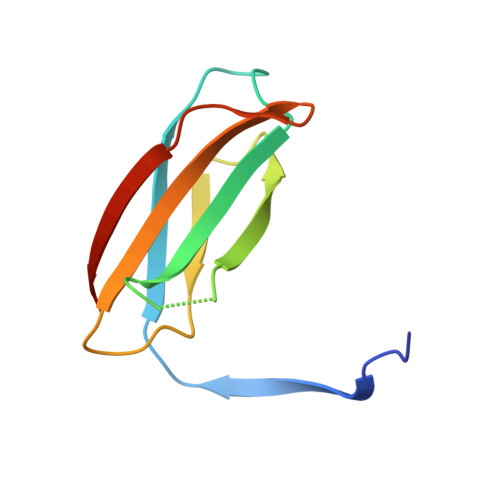N-terminal beta-strand swapping in a consensus-derived alternative scaffold driven by stabilizing hydrophobic interactions.
Luo, J., Teplyakov, A., Obmolova, G., Malia, T.J., Chan, W., Jacobs, S.A., O'Neil, K.T., Gilliland, G.L.(2014) Proteins 82: 1527-1533
- PubMed: 24464739
- DOI: https://doi.org/10.1002/prot.24517
- Primary Citation of Related Structures:
4M6A - PubMed Abstract:
The crystal structure of an N-terminal β-strand-swapped consensus-derived tenascin FN3 alternative scaffold has been determined. A comparison with the unswapped structure reveals that the side chain of residue F88 orients differently and packs more tightly with the hydrophobic core of the domain. Dimer formation also results in the burial of a hydrophobic patch on the surface of the domain. Thus, it appears that tighter packing of F88 in the hydrophobic core and burial of surface hydrophobicity provide the driving forces for the N-terminal β-strand swapping, leading to the formation of a stable compact dimer.
Organizational Affiliation:
Biotechnology Center of Excellence, Janssen Research & Development LLC, Spring House, Pennsylvania, 19477.














